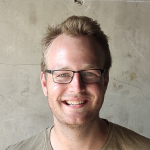
A recent report shows that of the $270 million invested annually in conservation funding earmarked for forest management initiatives of Indigenous peoples and local communities, only a fraction reached a named Indigenous or community group.
The report, a collaboration between the Rights and Resources Initiative and the Rainforest Foundation Norway, assesses donor funding between 2011 and 2020. It found that while donors may claim their funding is in support of Indigenous peoples or local communities, only 17 percent of the funds named the group of people they were supporting.
This finding suggests that Indigenous peoples and local communities have relatively little say in how the dollars meant to support them are actually spent. The decision-making is mostly left to large international organizations and multilateral institutions.
Large organizations focus too much on results
Larger organizations have more resources at their disposal and are generally better organized to develop and deliver conservation programs, but their motivations are not necessarily aligned with those of recipient communities — and that’s what should be the top priority.
There’s a tricky balance to strike when we look at the donor-recipient relationship. Donors want to see results; they want to see that their dollars are having a direct impact on the issue they are supporting. In environmental stewardship, that might be planting a certain number of trees or protecting a targeted area of land — some statistic that a donor can identify with and feel rewarded for their contribution.
In another study, the nonprofit consultancy Root Cause found that 75 percent of donors want to see these sorts of results when they open their wallets. Of course, this information is important and provides confirmation that donor funds are indeed going to support the described cause, but it should not become the sole driver of conservation programs.
A narrowed focus on quantifiable impacts might neglect other, more important issues that a community is facing.
For example, engaging in legal battles to defend natural environments can be a costly, time-consuming process — one that might benefit greatly from additional funding. But how can one measure the avoided impact of an unfavorable ruling? It’s not a result that’s easy to report, and the uncertainty behind it does not necessarily entice donors to provide support. Trees planted, on the other hand, is easy to measure and easy to conceptualize.
In other words: Large organizations are well-practiced at providing the types of results that donors want to see. Local communities, however, are better at recognizing where funding can be best spent — whether that investment returns concrete, measurable results or not.
Involving locals in the decision-making process
The primary suggestion of the Rights and Resources report is that donors should support Indigenous peoples and local communities as, “implementers, leaders and partners — not merely beneficiaries.”
Local communities should have more input in how money meant to benefit them is spent. Roughly half of the funding for Indigenous peoples and local communities’ conservation efforts went to multilateral institutions and large international organizations, according to the report. Large international organizations are well removed from local communities and have greater overhead costs that can stretch donation dollars thin.
To ensure that funding is community-led, donors should instead build strong relationships with recipient communities and intermediaries with close relationships in the community such as national and local NGOs.
Indigenous peoples in particular should have their right to self-determination respected as outlined in the United Nations Declaration on the Rights of Indigenous Peoples (UNDRIP). This means, in part, allowing Indigenous peoples to freely pursue their economic, social, and cultural development.
What does this mean for U.S. businesses?
When businesses engage in conservation efforts or charity work, they should be aware of what local communities actually need, rather than planting trees and calling it a job well done.
The push for stricter environmental, social and governance (ESG) measures in the United States is leading to more businesses being mindful of their environmental impacts. Different mitigation efforts, like carbon offsetting, are becoming more popular in the business community. Many of the carbon offset programs available, however, fall into the same results-based trap mentioned above.
Engaging with local communities and Indigenous groups to ensure contributions are achieving their desired impact is a much more robust conservation strategy than waiting to count how many trees your money planted.

Andrew Kaminsky is a freelance writer with no fixed location. He travels all corners of the globe learning about the different groups that call this planet home, seeing natural wonders, and sharing laughs with the people he finds along the way. An alum of the University of Winnipeg's International Development program, Andrew is particularly interested in international relations and sustainable development. In his spare time you are likely to find Andrew engaging in anything sport-related, or finding common ground with new friends over a craft beer.














